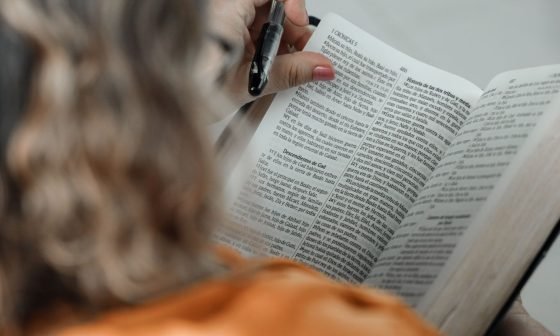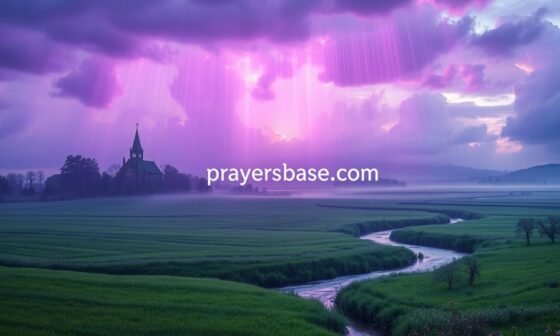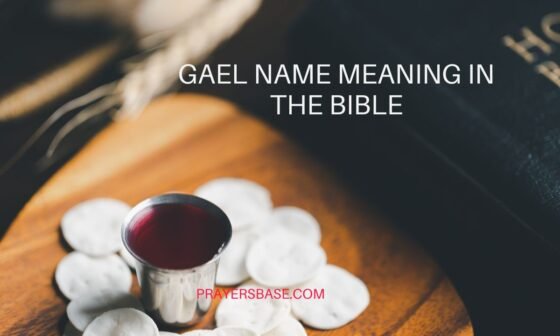What if true healing isn’t just physical, but a promise written centuries ago? Imagine a single verse holding the key to restoration for every wound—body, mind, and spirit. This ancient text doesn’t merely describe suffering; it offers hope that transcends time.
Many of us carry unseen scars—pain from the past, fear of the future, or struggles that feel too heavy to bear. Yet the words of Isaiah 53:5 reveal something extraordinary: healing was purchased through sacrifice. The imagery of wounds and restoration points to a love so profound it reshapes our understanding of redemption.
We often miss the deeper truth here. This passage isn’t just about historical events—it’s a living invitation. When we explore its context, we discover how prophetic words spoken long ago found fulfillment in the transformative act of the cross. Every stripe, every wound, became a pathway to wholeness.
What does this mean for us today? It means our brokenness isn’t the end of the story. Together, we can lean into this promise, trusting that the same power that brought life from death can mend what feels irreparable. Let’s uncover how these sacred words continue to speak healing into our modern lives.
Understanding Isaiah 53:5 in Its Biblical Context
Centuries before hope walked on two legs, a prophet’s words painted redemption in vivid detail. Isaiah’s message emerged during Israel’s exile—a time when sin and transgressions fractured their covenant with God. The prophet spoke to a nation aching for restoration, pointing beyond their immediate struggles to a Servant who’d bear humanity’s brokenness.

Historical Background and Prophetic Setting
Isaiah’s audience knew the weight of separation from God. Their suffering wasn’t random—it revealed the cost of rebellion. Yet amid warnings, the prophet wove a thread of hope: One would come to absorb their punishment. Ancient Jewish scribes debated this figure, some seeing a collective symbol, others a future Messiah.
Fulfillment Through the Life of Jesus Christ
Centuries later, Peter 2:24 echoes Isaiah’s vision: “He himself bore our sins.” Every lash Jesus endured mirrored the prophet’s words. His pain wasn’t tragic coincidence—it fulfilled a divine blueprint. Where Israel’s sacrifices temporarily covered transgressions, His sacrifice tore the veil permanently.
This fulfillment reshapes our understanding of suffering. The cross didn’t erase hardship—it infused it with purpose. When we wrestle with brokenness today, Isaiah’s ancient promise reminds us: Healing flows from wounds willingly borne.
By His Stripes We Are Healed: Isaiah 53:5 – Unpacking the Healing Message
Healing often wears two faces—one we see, and one we feel deep within. While physical recovery matters, Isaiah’s prophecy points to a deeper restoration that mends fractured souls. Let’s explore how ancient wounds became gateways to wholeness.

When Scars Become Sacred
The phrase “stripes healed” flips suffering’s script. Those brutal marks—meant to degrade—became symbols of liberation. Imagine this: the very wounds inflicted to punish now declare our freedom from crushed iniquities. Spiritual healing begins here, where shame meets grace.
Why Pain Carried Purpose
Every lash described in Isaiah 53:5 served a redemptive plan. The Servant’s “wounded transgressions” absorbed what we deserved. Think of it as divine exchange—our pierced transgressions for His unshakable peace. This wasn’t random agony; it was love’s deliberate answer to humanity’s brokenness.
Three truths transform how we view healing:
- Spiritual restoration roots itself in forgiveness, not just symptom relief
- Our sins required a remedy no bandage could cover
- Christ’s sacrifice addresses both visible hurts and hidden heart-wounds
Your deepest ache—the one you hide—finds its cure in wounds that outlive time. That’s the paradox: life springs from stripes meant to destroy.
The Symbolism of Suffering and Redemption in Scripture
Scars tell stories—but what if they also hold secrets to our deepest renewal? Scripture reveals how suffering weaves threads of meaning far beyond surface pain. The marks left by the Savior aren’t just historical wounds—they’re living symbols inviting us into transformative truth.
The Significance of the Wounds and Stripes
Every scar on Christ’s body speaks a language of love. Biblical scholars note these wounds represent more than physical agony—they map our journey from death to life. The stripes, meant to punish, became portals of peace. Like ink on ancient parchment, they etch God’s promise into eternity.
Consider this paradox: Brutal lashes designed to end a life actually unlocked eternal hope. The cross reframes suffering—not as defeat, but as sacred ground where brokenness meets redemption.
The Cross as a Bridge to Renewal
That rough-hewn timber connects two worlds. On one side—death’s shadow. On the other—resurrection light. The cross’s form stretches vertically and horizontally, mirroring how divine love reaches across time and culture.
Scripture’s words paint vivid pictures: nails piercing darkness, blood watering dry souls. This isn’t mere poetry—it’s an invitation. When we gaze at those wounds, we’re not just remembering pain. We’re embracing a peace that rewrites our story from despair to deliverance.
What story do your scars tell? Like Christ’s stripes, they might just become markers of miraculous renewal.
Modern Interpretations and Misconceptions of Isaiah 53:5
How does an ancient prophecy speak to our modern struggles? Many today read Isaiah 53:5 through the lens of quick fixes, missing its transformative depth. Let’s untangle common misunderstandings while anchoring this truth in daily life.
Contextualizing the Passage for Today’s Believer
Some reduce this verse to a cure for physical sickness alone. Yet its power lies deeper—addressing the “sins body” that fractures our connection with God. A pastor recently shared how clinging to this promise helped her find peace upon receiving a chronic disease diagnosis. Her healing journey focused less on symptoms and more on renewed purpose.
Modern culture often seeks band-aid solutions. But Isaiah’s words invite us to confront brokenness head-on. Every time we face anxiety or relational wounds, we’re offered more than relief—we’re handed keys to restoration.
Practical Implications for Christian Living
What does this look like daily? Start by viewing challenges through eternity’s lens. When sickness lingers or relationships strain, ask: “How can Christ’s sacrifice reshape this pain?” One recovery group uses Isaiah 53:5 to reframe addiction struggles—seeing each craving as a place to receive divine strength.
Three ways to live this truth:
- Anchor prayers in Christ’s finished work, not just immediate needs
- Seek peace upon troubled areas through scripture meditation
- Share your story—your wounds might guide others to wholeness
Every generation of mankind faces unique battles. Yet the same stripes that healed ancient hearts still mend ours today. Your story isn’t over—it’s being rewritten through love that outlasts time.
Conclusion
What if your story could rewrite itself through love that never fades? This exploration reveals a central truth: every wound endured for us became a way to restoration. Jesus’ sacrifice isn’t just history—it’s the living power that dismantles rebellion and rebuilds hope.
Scripture’s promise stands unshaken. Through His atonement, we find more than relief—we receive full access to renewal. Each verse whispers this reality: brokenness bows to redemption’s design. Whether facing doubt, pain, or failure, the same way that conquered death now walks with us.
Let these words reshape your perspective. Healing isn’t a distant dream—it’s a daily choice to trust the One who turned stripes into salvation. His truth meets us in our storms, offering power to transform scars into stories of grace.
Today, lean into this way forward. Let Christ’s atonement anchor your steps. As you live out this verse’s promise, watch how love turns even rebellion’s ashes into beauty.
FAQ
Does Isaiah 53:5 promise physical healing for believers today?
While the verse speaks powerfully about restoration, its primary focus is spiritual healing through Christ’s sacrifice. Physical healing can occur within God’s sovereign will, but the text emphasizes freedom from sin’s consequences and reconciliation with God as our ultimate hope.
How does Peter’s reference to “wounds” in 1 Peter 2:24 connect to Isaiah’s prophecy?
Peter directly links Jesus’ suffering on the cross to Isaiah’s description of the Messiah bearing humanity’s brokenness. This connection confirms Christ as the fulfillment of Isaiah’s vision, showing how His sacrifice heals our relationship with God.
Why does the passage mention peace alongside healing?
True healing brings holistic restoration—peace with God through forgiveness of sins (vertical reconciliation) and peace within ourselves/others (horizontal harmony). The Messiah’s wounds address both our rebellion and its relational fallout.
Can we claim healing while still experiencing pain or sickness?
Absolutely. Our present struggles don’t negate Christ’s victory. The cross secures eternal life and ultimate restoration, even as we walk through temporary trials. Trusting His finished work anchors us amid ongoing battles with suffering.
How should Christians apply Isaiah 53:5 practically?
We embrace both gratitude for salvation and compassionate service to others. Just as Christ bore our burdens, we’re called to share others’ pains while pointing them to the Healer who makes all things new.
What’s the significance of the word “stripes” in this context?
The term evokes the brutal Roman flogging Jesus endured. These wounds weren’t accidental—they were the price paid to dismantle sin’s power. Every lash demonstrates love’s willingness to enter our darkness to bring light.







